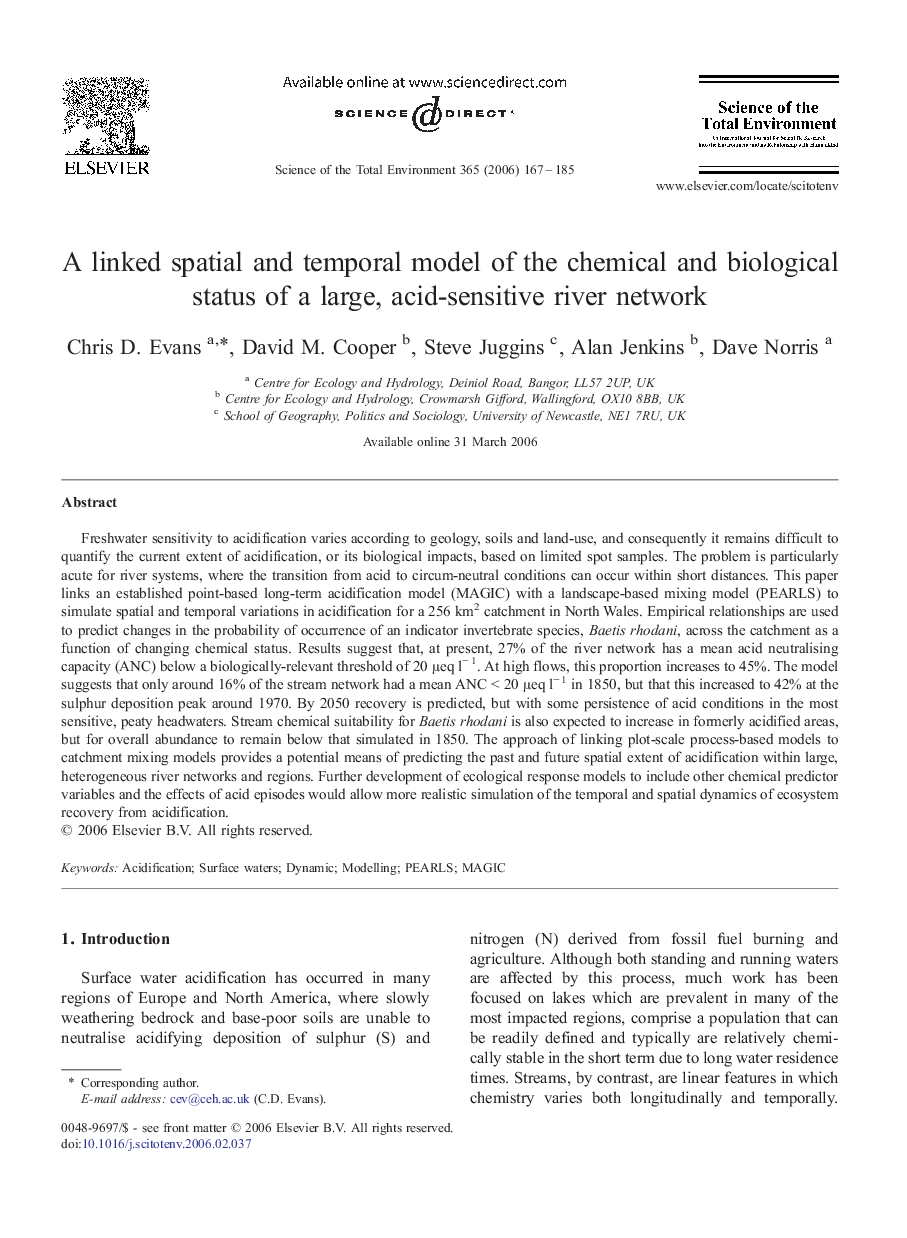| کد مقاله | کد نشریه | سال انتشار | مقاله انگلیسی | نسخه تمام متن |
|---|---|---|---|---|
| 4434300 | 1619973 | 2006 | 19 صفحه PDF | دانلود رایگان |

Freshwater sensitivity to acidification varies according to geology, soils and land-use, and consequently it remains difficult to quantify the current extent of acidification, or its biological impacts, based on limited spot samples. The problem is particularly acute for river systems, where the transition from acid to circum-neutral conditions can occur within short distances. This paper links an established point-based long-term acidification model (MAGIC) with a landscape-based mixing model (PEARLS) to simulate spatial and temporal variations in acidification for a 256 km2 catchment in North Wales. Empirical relationships are used to predict changes in the probability of occurrence of an indicator invertebrate species, Baetis rhodani, across the catchment as a function of changing chemical status. Results suggest that, at present, 27% of the river network has a mean acid neutralising capacity (ANC) below a biologically-relevant threshold of 20 μeq l− 1. At high flows, this proportion increases to 45%. The model suggests that only around 16% of the stream network had a mean ANC < 20 μeq l− 1 in 1850, but that this increased to 42% at the sulphur deposition peak around 1970. By 2050 recovery is predicted, but with some persistence of acid conditions in the most sensitive, peaty headwaters. Stream chemical suitability for Baetis rhodani is also expected to increase in formerly acidified areas, but for overall abundance to remain below that simulated in 1850. The approach of linking plot-scale process-based models to catchment mixing models provides a potential means of predicting the past and future spatial extent of acidification within large, heterogeneous river networks and regions. Further development of ecological response models to include other chemical predictor variables and the effects of acid episodes would allow more realistic simulation of the temporal and spatial dynamics of ecosystem recovery from acidification.
Journal: Science of The Total Environment - Volume 365, Issues 1–3, 15 July 2006, Pages 167–185